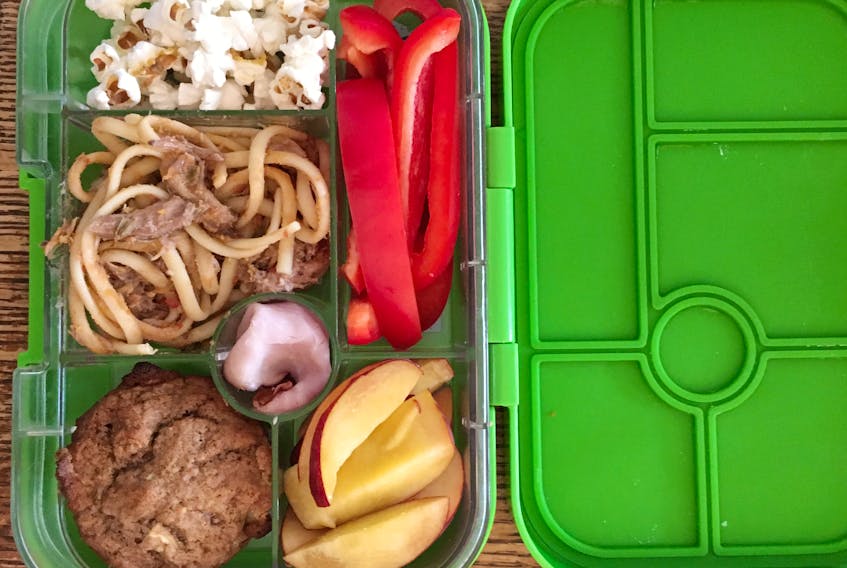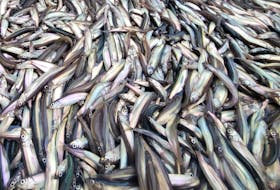We’re deep into fall and kids have long been settled back at school. Being in the thick of packing lunches every day is hard enough, never mind adding the efforts of making it litterless; packing a lunch with zero waste, no garbage involved. It’s a challenge some parents and schools are taking up.
Kings County Academy is taking small steps for big change while our climate is in crisis. The public school in Kentville, N.S removed all garbage cans from their cafeteria a year ago.
“We’ve started with a litterless cafeteria,” says Principal Victoria Laurence. “We moved away from using paper plates, plastic knives, and forks. We have real cutlery, china-type plates, no straws.”
Laurence says they’re asking parents to look at their practices.
“If parents are sending garbage, we’re asking that it goes home,” she says. “We want to leave less of a footprint. We’re trying to model for the kids less waste.”
They’ve seen a significant difference in the amount of garbage the school is putting out.
“That doesn’t mean that families aren’t putting it out at home. But they may change their practices a little bit. We have seen less packaging.”
Making the switch
It may seem hard to beat the convenience of quick, go-to items like apple sauce pouches, granola bars, and cheese strings. It may also sound challenging to go litterless without spending a lot of time and money.
Claire Gallant of Bite-Sized Kitchen, a Halifax, N.S. business, says this is not the case. Her company raises expectations of what kids can do in the kitchen, like lunch packing and meal planning. She teaches kids to cook from scratch, using whole ingredients and hands-on methods, and offers tips through her website, workshops, and classes.
When it comes to a waste-free lunch, she says there are so many things you can do.
The first step is to stock up on containers.
“The question is how long do you want your containers to last?” says Gallant.
She has a number of durable stainless steel containers that will last for years. You can buy thinner, plastic Ziploc containers, but she says they’re probably going to crack in a few months.
“Even that is a step beyond plastic baggies which last for half a day. You can start there if you don’t have the cash to splash out for something that’s maybe $25 for a couple of solid containers.”
Food Storage
Jolyn Swain stocks a full waste-free lunch section at her Halifax, N.S. store Nurtured. She recommends a container that’s easy to open for younger kids that will still be big enough, portion-wise, for kids to use as they grow. She suggests putting a thick rubber band - the kind you can find on asparagus or broccoli - around a thermos lid so younger kids can open them.
“If you can go stainless, they’re going to last so long. They don’t ever have to be replaced, unless you lose a part.”
Bento-style boxes are compartmentalized, so food doesn’t touch or leak into each section.
For younger families, Swain suggests picking a water bottle that will last through daycare years into school years, changing out the style of lid to make it age-appropriate.
A machine-washable lunch bag that can be used to tote things along, either in a backpack or carried separately, is essential.
“I love cute little utensils that fit into Bento boxes or a pouch of utensils that comes home, gets washed and gets put back,” she says.
She’s also a big fan of washable zippered pouches to carry anything from veggies to sweets, and beeswax wraps instead of plastic wrap.
“It’s something that’s reusable, something that’s compostable after it’s full two-year life," Swain said. "With beeswax and some of the other ingredients that get added to it, it’s anti-bacterial. It seals itself and keeps everything really fresh.”
Swain recommends starting with one thing and to keep using it.
“Reuse stuff. It’s so simple.”
Prep ahead of time
Make things easy when packing lunches by baking something on the weekend, suggests Gallant.
“If you’re making it at home, it’s almost guaranteed to be low-waste or waste-free,” says Gallant. “Being in the kitchen is all part of litterless lunch because you’re doing it for yourself.”
Gallant suggests things like energy bites or blueberry muffins.
“You can put in whole grain flours, you can put honey instead of sugar, or you don’t have to do that. It can even be cookies. It sounds unhealthy, but actually, if you’re baking it with a whole grain flour or even if you’re just making it from scratch, it’s going to be better and tastier than something you would buy individually packaged at the store.”
A quick cost-comparison can show the savings, she adds.
“When you think of the amount of money you spend on individually packaged foods, they’re not cheap. An individually packaged box of granola bars, you’re going to spend way more money per bar than you would making a pan of your own,” says Gallant.
“You make them, tuck them in the fridge, and put one in your lunch every day. You are saving on time because you baked a batch earlier in the week."
She also likes that she's helping the environment at the same time.
“It’s also about the climate and the bigger issues we want to talk about, and how we don’t want to encourage our kids to be throwing stuff away, or encouraging single-use plastics," Gallant said. "You can help cool the earth and it’s not that challenging. You’re going to save money, and you’re going to be healthy. It’s not that hard when you think of it as a win-win.”
Suggested litterless lunch ideas:
- Whole fruits and cut up veggies.
- Sandwiches. It gets a bit more fiddly but you can do food on sticks, get bamboo skewers or pretzel sticks and put ham and cheese on them.
- Leftovers: Make extra for dinner and you’ve got a big batch, use it for lunch. Macaroni and cheese, baked chicken (shred and send it plain or in a wrap), cooked sausage, cooked chicken, ham, or spaghetti and meatballs all work well in a thermos.
- Cheese.
- Boiled eggs are good for you, easy and cheap.
Bite-Sized Kitchen’s Energy Bites
Makes 20-25 bites (dairy-free, gluten-free, nut-free)
- 1 cup oats
- 2/3 cup unsweetened coconut flakes
- 1/2 cup ground flaxseed (you can buy this already ground in the natural section of the grocery store)
- 2 Tb cocoa powder
- 1 ⁄ 2 tsp salt
- 1/2 cup sunflower seed butter (or peanut butter, or almond butter)
- 1/4 cup honey
- 1 tsp vanilla
- 2 Tb water, to bring the ingredients together if needed
Place dry ingredients in a large bowl and mix well. Add wet ingredients and mix again. Use your hands to squeeze the mixture together to make sure all of the ingredients are blended. If the mixture is a little dry, add 1 Tb of water at a time to bring it together. Roll the dough into small balls. Dip your fingers in water to keep from getting too sticky. These can be eaten right away, and also do well covered in the fridge for about a week.









